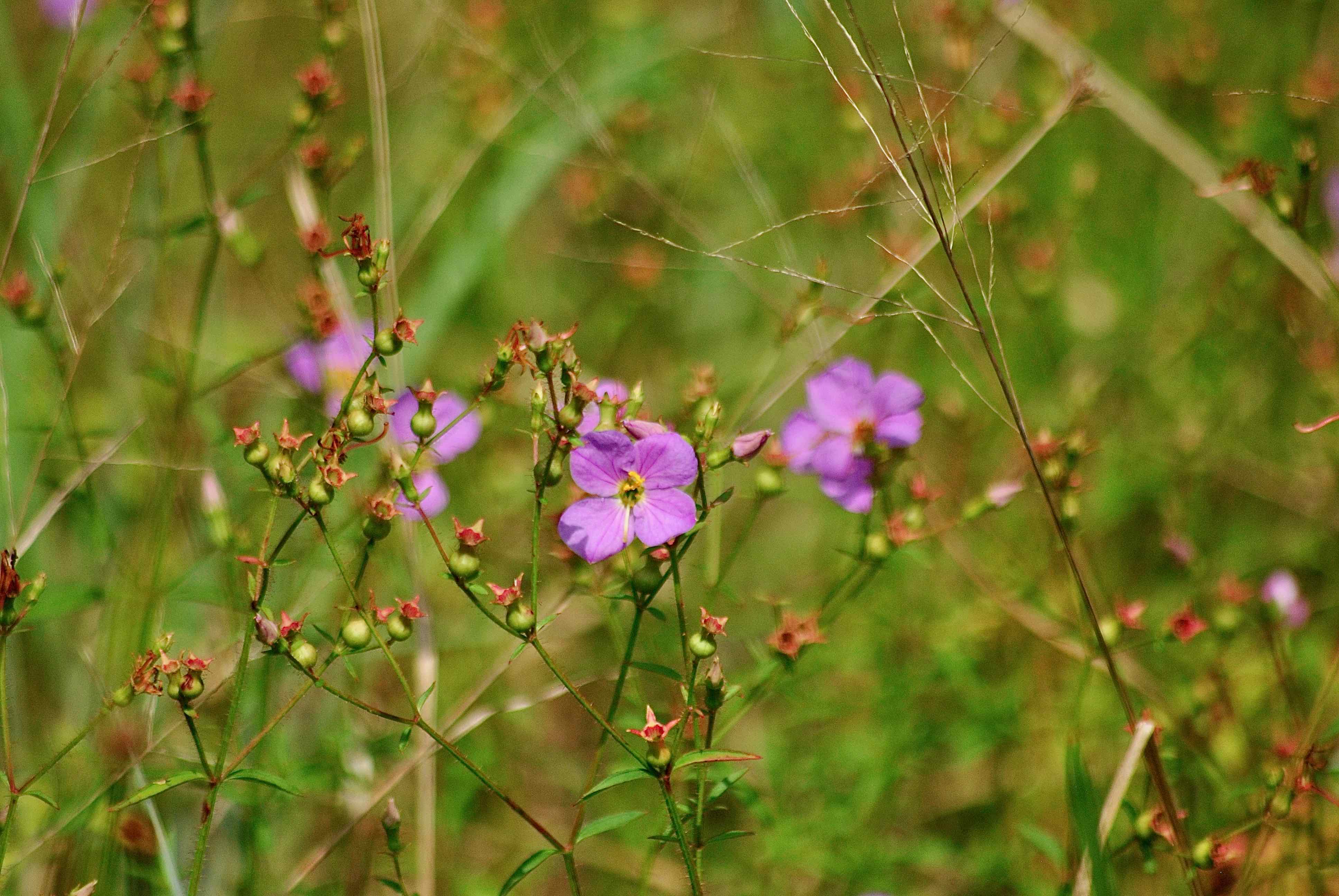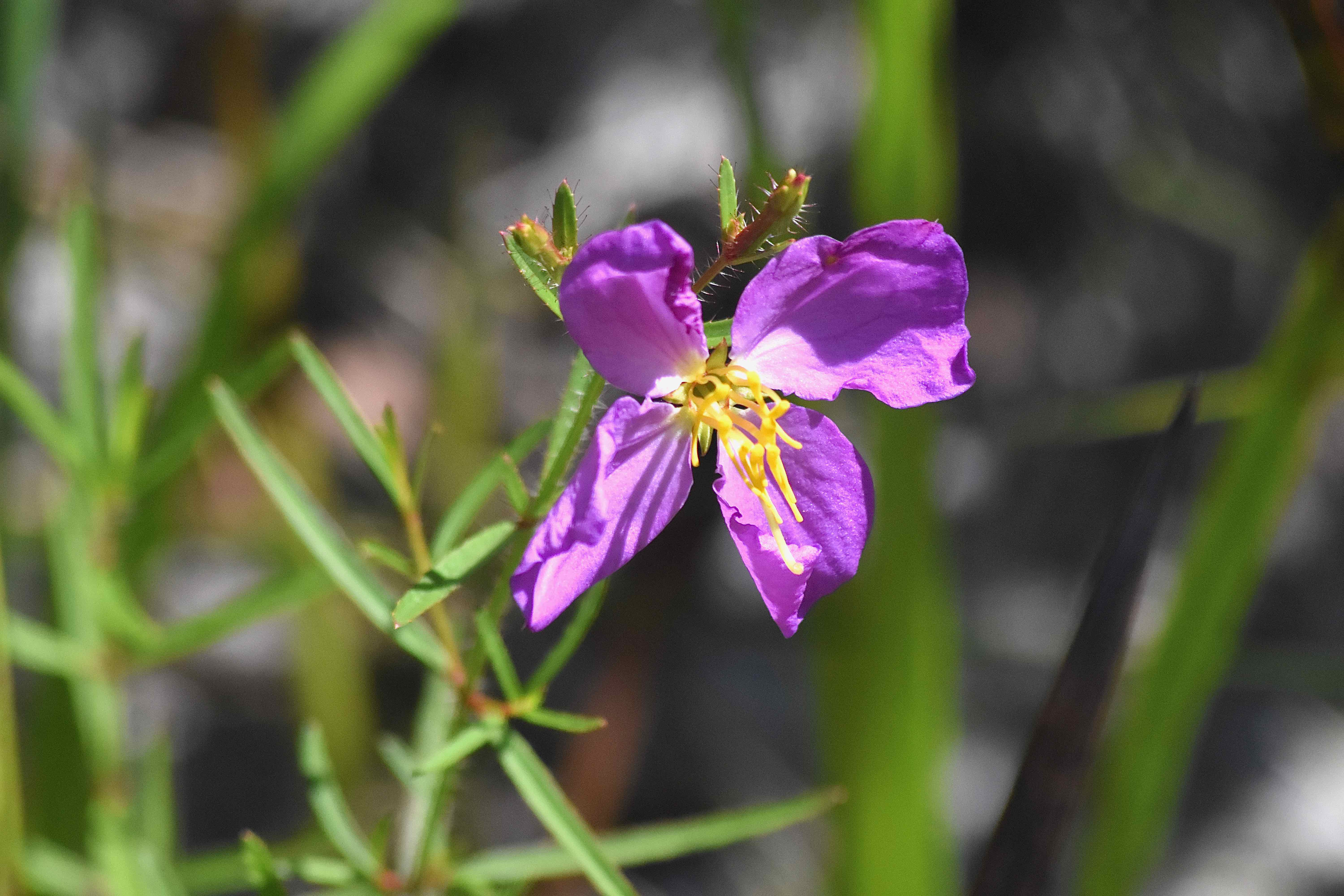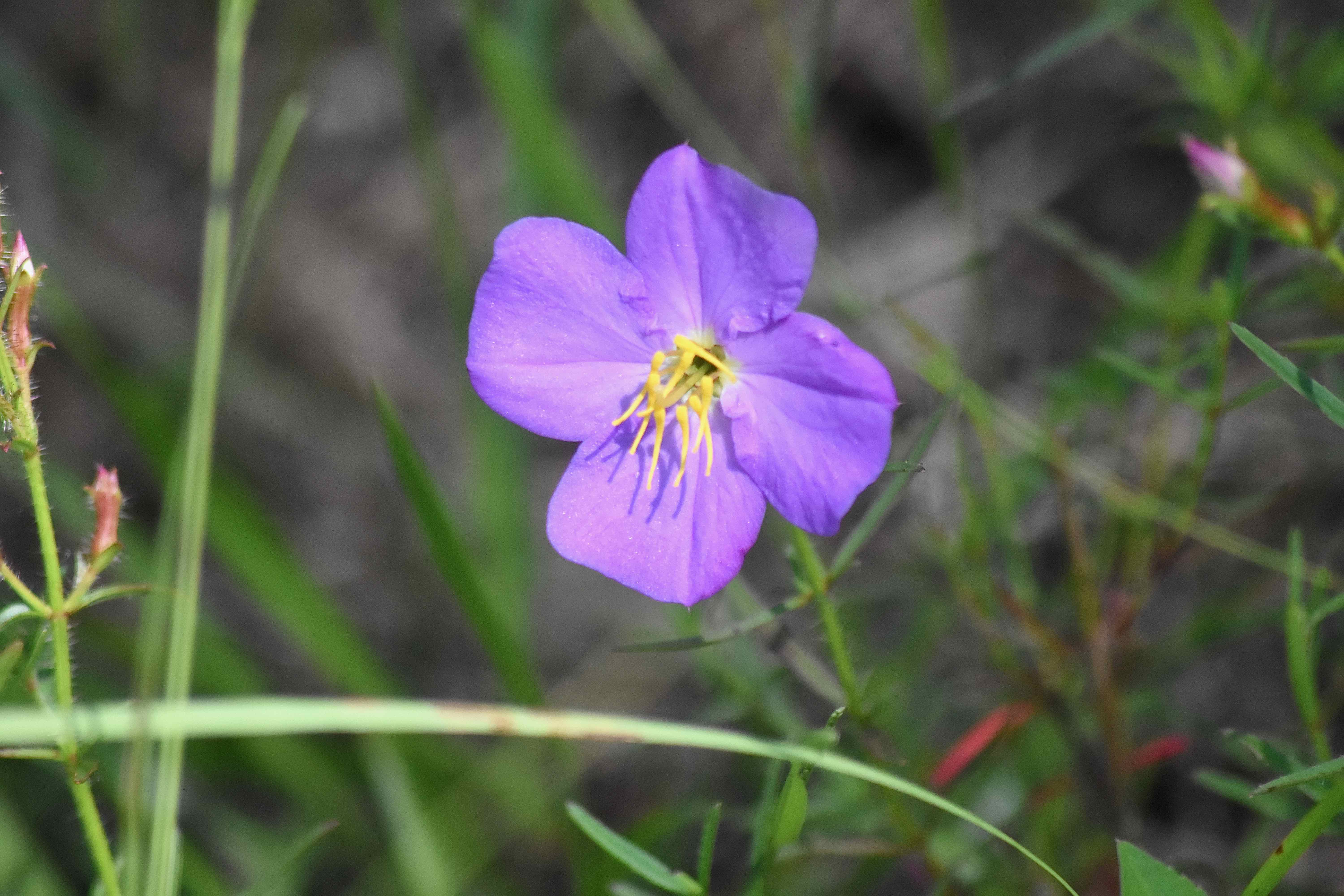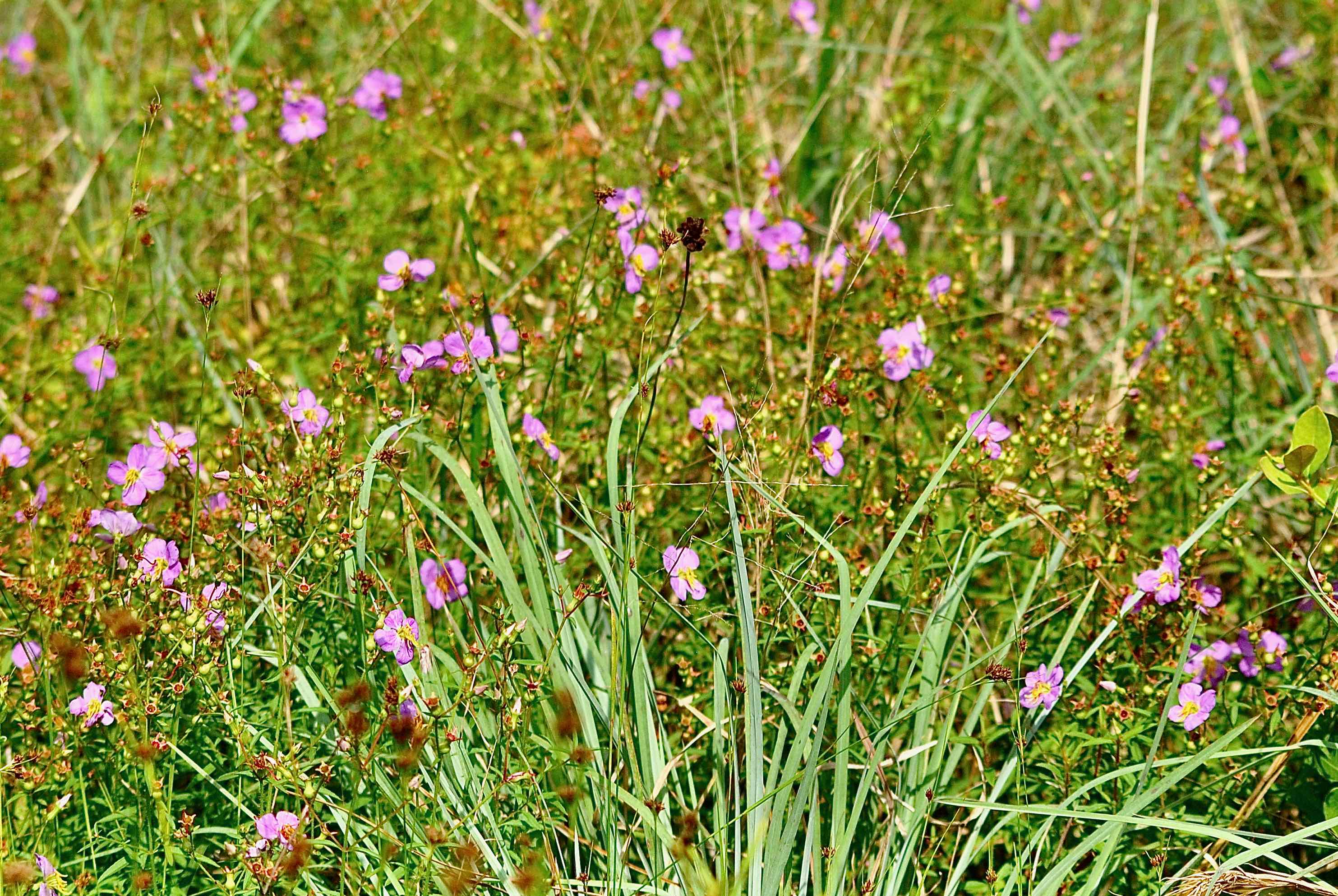
Pale meadow beauty, photographed at Seabranch Preserve State Park, Hobe Sound, Martin County, in May 2015.
There are four members of Rhexia — the meadow beauty clan — found in the wilds South Florida. Pale meadow beauty, aka Rhexia mariana, is the most common of the bunch. Yet even it is considered rare within the region.
Pale meadow beauty is a Florida native found mainly in moist habitats, including flatwoods, wet meadows, marshes and savannas. The flowers are fairly large and various light shades of reds, pinks, purples, lavenders and even white. When in bloom, you can't miss it; when it's not, its the living definition of inconspicuous.
Its native range includes most of the United States east of the Mississippi as far north as Michigan, New York and Massachusetts.
Pale meadow beauty while rare in South Florida, is more common in Central Florida and the Panhandle.
Pale meadow beauty is globally secure but can be locally rare. Massachusetts, where it's found only in a few places on Cape Cod, lists it as endangered, as does Indiana and Pennsylvania. There are only two known populations in Michigan, one of which at the time of this writing hadn't been surveyed since 1995.
It is a perennial, flowering spring to fall, going dormant in winter. The flower has four petals, four sepals (the outter part of the flower) and eight long, bright orange-yellow stamen with curving anthers on the end that contrast with the color of the petals. The effect is to recall lush, drooping eyelashes. The blooms are large, about an inch across; once fertilized, they produce a seed pod with a narrow neck and pot belly.
The plant grows between a foot to two-and-a-half feet tall (some references have it taller). The leaves are lance-shaped, serrated along the edges and aligned opposite each other along the stem. The leaves also have three prominent veins that run their length and often have a red tinge on their underside. The stem is hairy as are the seed pods, but the leaves are not.
It grows in full sun or partial shade. Pale meadowbeauty can spread and form dense colonies by sending out underground stems called rhizomes from which new shoots grow. The plant also reproduces by seed and cuttings. Seeds for the pale meadow beauty are commercially available through at least one vendor in West Virginia but meadow beauties generally aren't on the market. The plant is used in wet gardens.
Deer are known to graze on pale meadow beauty, as noted in one of its common names, but it has little use for us humans outside of the garden.
Pale meadow beauty's South Florida cousins are: West Indian meadow beauty, R cubensis, Nuttall's meadow beauty, R Nuttalli and fringed meadow beauty, R petiolata. The Institute for Regional Conservation considers the three imperiled or critically imperiled in South Florida. It considers pale meadow beauty to be rare. Of the three, West Indian meadow beauty bears the closest resemblance to our guy.
The great Swedish scientist Carl Linnaeus named the genus Rhexia for some unknown reason. The late Daniel F. Austin, in his "Flatwood Plant Guide," speculated that perhaps the inspiration came from some of Linnaeus's plant collectors who might have told him that the petals easily fall off the flowers. Rhexis in Greek means "break."
Pale meadow beauty is a member of Melastomaceae, the meadow beauty family. Other common names include Maryland meadow beauty, deer grass and handsome Harry. Spelling variations include meadowbeauty and meadow-beauty.
Click on photo for larger image
Links for Pale Meadowbeauty



